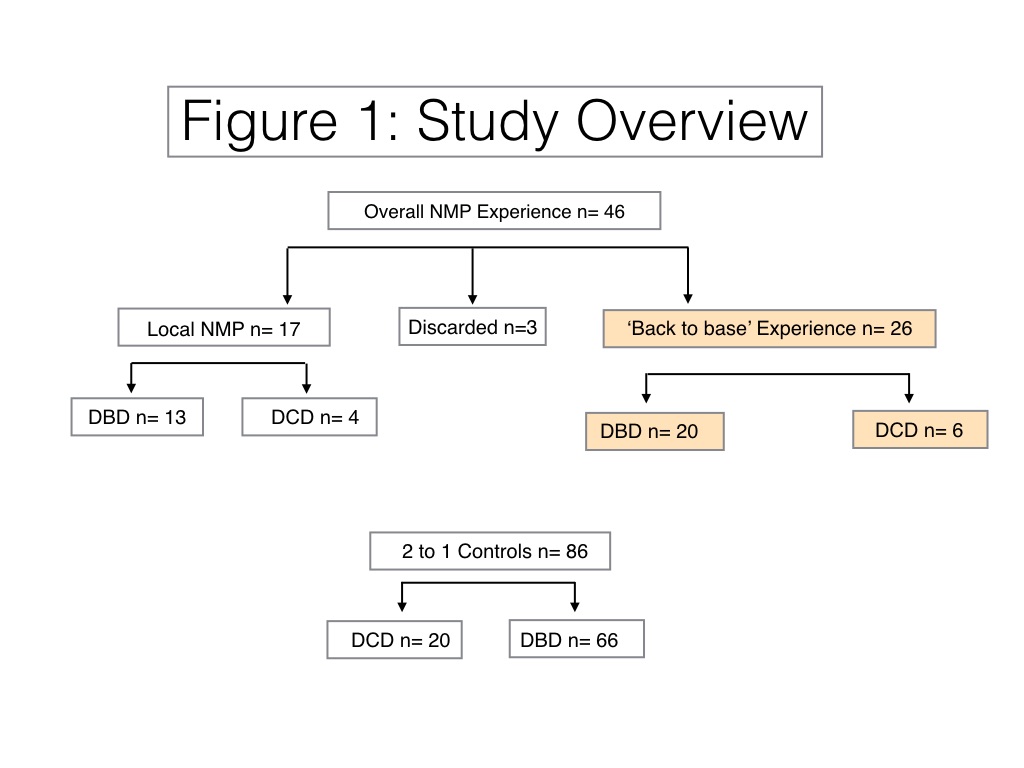‘Back-to-Base’ Normothermic Clinical Liver Perfusion – Cold before NMP Does Not Compromise Protective Benefit
University of Alberta Hospital, Edmonton, AB, Canada
Meeting: 2019 American Transplant Congress
Abstract number: A184
Keywords: Graft function, Liver preservation, Liver transplantation, Machine preservation
Session Information
Session Name: Poster Session A: Donor Management: All Organs Excluding Kidney
Session Type: Poster Session
Date: Saturday, June 1, 2019
Session Time: 5:30pm-7:30pm
 Presentation Time: 5:30pm-7:30pm
Presentation Time: 5:30pm-7:30pm
Location: Hall C & D
*Purpose: In previous clinical studies utilizing normothermic ex situ liver machine preservation, perfusion was initiated rapidly following organ procurement using a portable system transported to the donor center. As an alternative preservation strategy, termed ‘Back-to-base’, we transported grafts procured at distant sites back to our recipient center utilizing static cold storage, where normothermic machine perfusion was commenced. Our aim was to assess the safety and efficacy of such a strategy as a more practical alternative to preservation machine transport.
*Methods: Between February 2015 until June 2018, a non-randomized pilot study was performed at a single liver transplant site. A schematic of our study and enrolment is provided in Figure 1. Outcomes of ‘Back to base’ livers (n=26) were compared to grafts procured locally also having undergone machine perfusion (n=17) but with minimal cold storage. We also compared outcomes of all livers preserved with NMP (n=43) to 86 livers transplanted following static cold storage.
*Results: A total of 46 potential liver grafts were procured and perfused with NMP, of which three were discarded before transplant based on poor ex situ perfusion function (Figure 2). We found significant correlation between the NMP circuit AST level and the subsequent development of EAD in recipients (r= 0.33 95% CI 0.02 – 0.58, p= 0.03). Despite significantly prolonged mean cold ischemia time (6 vs 3.2 hours) (p=>0.0001), “Back-to-base’ livers demonstrated no difference in early or late graft function, incidence of complications, or long-term graft and patient survival. All livers preserved with NMP (Local or ‘Back-to-base’) demonstrated significantly decreased injury compared to those transplanted after preservation with SCS (median peak AST in first 7 days 784 vs 1082 U/L, p=0.04).
*Conclusions: Overall, livers perfused with NMP exhibit less graft injury following transplantation. A ‘Back to base’ approach offers a practical alternative to portable normothermic ex situ machine transport, particularly over larger geographic areas, potentially eliminating the need to transport complex technology, without overt compromise to outcome.
To cite this abstract in AMA style:
Dajani K, Bral M, Izquierdo Dleon, Bigam D, Kneteman N, Shapiro J. ‘Back-to-Base’ Normothermic Clinical Liver Perfusion – Cold before NMP Does Not Compromise Protective Benefit [abstract]. Am J Transplant. 2019; 19 (suppl 3). https://atcmeetingabstracts.com/abstract/back-to-base-normothermic-clinical-liver-perfusion-cold-before-nmp-does-not-compromise-protective-benefit/. Accessed December 28, 2025.« Back to 2019 American Transplant Congress


